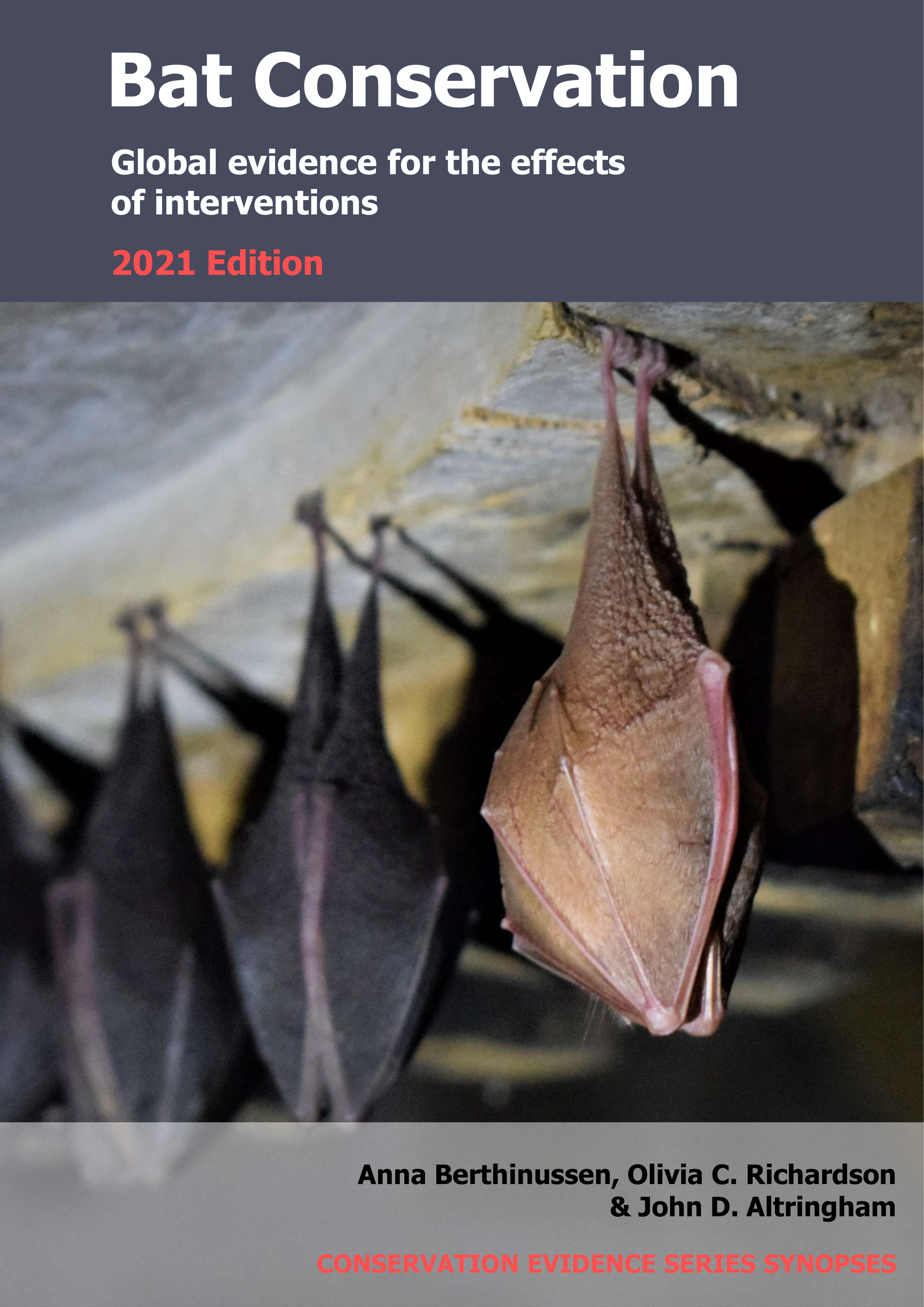Create spaces for roosting bats in road/railway bridges and culverts
-
Overall effectiveness category Likely to be beneficial
-
Number of studies: 1
View assessment score
Hide assessment score
How is the evidence assessed?
-
Effectiveness
60% -
Certainty
40% -
Harms
0%
Study locations
Supporting evidence from individual studies
A review in 2017–2018 of case studies at eight road bridges in California, USA (Harvey & Associates 2019) found that spaces created for roosting bats to replace those lost during bridge works were recolonized by bats in similar or greater numbers to the original roosts at half of the sites. At two sites, ‘add-on’ hanging roost boxes were used by Yuma myotis bats Myotis yumanensis in greater numbers (300 and 1,200 bats) than the original roosts (700 and 4,000 bats). At one site, recessed ‘cast-in place’ elongated roost boxes were used by Mexican free-tailed bats Tadarida brasiliensis in greater numbers (total 82,052 bats) than the original roost (40,000 bats). At another site, concrete ‘Oregon wedge’ panels were used by Mexican free-tailed bats in similar numbers (500 bats) to the original roost (400 bats). At four other sites, roosting spaces (including concrete slabs, concrete or plywood ‘Oregon wedge’ panels, and recessed ‘cast-in place’ elongated roost boxes) were used by 75–99% fewer Mexican free-tailed bats than the original roosts (see original report for details). At all eight sites, roosting spaces were created to replace those lost during bridge works. Counts of bats before and after the works were taken from questionnaires completed by the California Department of Transportation. Field surveys (including daytime inspections, colony and emergence counts) were conducted by the authors in spring and summer 2017 and 2018 after bridge works were complete. Twenty-seven other case studies were reviewed in the report, but numbers of bats before and/or after bridge works were not reported.
Study and other actions tested
Where has this evidence come from?
List of journals searched by synopsis
All the journals searched for all synopses
This Action forms part of the Action Synopsis:
Bat Conservation
Bat Conservation - Published 2021
Update 2020





)_2023.JPG)














